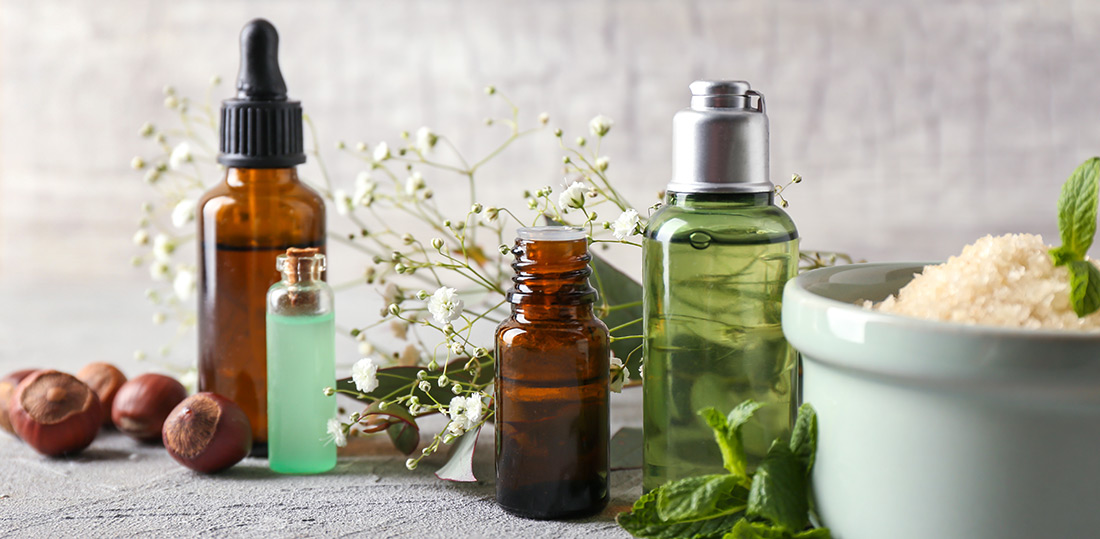Ingredients

We Set the Stage to your Customized Wellness Experience ...
3 DIFFERENT TYPES OF CBD
- Full Spectrum CBD (<0.3% thc in non medicinal/recreational states)
Full spectrum means that an oil or product contains all the cannabinoids and other chemical compounds that are naturally occurring in the cannabis plant. Quality full spectrum CBD products are typically high in CBD with minor cannabinoids, which includes THC (less than 0.3%). True full spectrum extracts also include flavonoids, phenolic compounds (terpenes) as well as fatty acids like Omega-3. The overall composition of full spectrum is synonymous with the “entourage effect” – which refers to the increased effectiveness of these products due to the different cannabinoids and other chemical compounds working synergistically. Full spectrum products are commonly considered more effective than products that are broad spectrum or isolate products.
- Broad-Spectrum CBD (no thc)
Broad-spectrum CBD is near a full-spectrum option, while abstaining from THC.
It offers similar entourage benefits associated with full-spectrum CBD, without the risk of consuming traceable amounts of THC.
Broad-spectrum CBD is an excellent choice for individuals that can’t have any traces of THC in their systems, whether for legal purposes or anything else, but want to get a closer efficacy to full spectrum options. Note: Not all broad spectrum will be 100% THC free.
- CBD Isolate (Absolutely No THC)
CBD isolate is a pure, crystalline powder that contains 99+% pure Cannabidiol.
All the plant matter contained in the hemp plant, including oils, waxes, chlorophyll, and more are removed, offering a finished product that’s pure CBD and nothing more.
INTRO TO CBD
Cannabidiol (CBD) is a naturally occurring compound found in the resinous flower of cannabis, a plant with a rich history as a medicine going back thousands of years. Today the therapeutic properties of CBD are being tested and confirmed by scientists and doctors around the world. A safe, non- addictive substance, CBD is one of more than a hundred “phytocannabinoids,” which are unique to cannabis and endow the plant with its robust therapeutic profile.
CBD is closely related to another important medicinally active phytocannabinoid: tetrahydrocannabinol (THC), the compound that causes the high that cannabis is famous for. These are the two components of cannabis that have been most studied by scientists.
Both CBD and THC have significant therapeutic attributes. But unlike THC, CBD does not make a person feel “high” or intoxicated. That’s because CBD and THC act in different ways on different receptors in the brain and body.
CBD has the potential to lessen the psychoactive effects of THC, depending on how much of each compound is consumed. Many people want the health benefits of cannabis without the high – which is where cannabinoids like CBD can come into play, as they produce no psychoactive effects, what so ever.
The fact that CBD is therapeutically potent, non-intoxicating, as well as easy to take, makes it an appealing treatment option for those who are cautious about trying cannabis for the first time.
HOW DOES CBD WORK?
CBD and other Phytocannabinoids interact with our bodies in a variety of ways. One of the main ways is by mimicking and augmenting the effects of the compounds in our bodies called “endogenous cannabinoids” – so named because of their similarity to compounds found in the cannabis plant. These “endocannabinoids” are part of what scientists refer to as the “endocannabinoid system.”
The discovery of the endocannabinoid system has significantly advanced our understanding of health and disease. It has major implications for nearly every area of medical science and helps to explain how and why CBD and other Phytocannabinoids are such versatile compounds – and why cannabis is such a widely consumed plant, despite its legal status.
The endocannabinoid system plays a crucial role in regulating a broad range of physiological processes that affect our everyday experience – our mood, our energy level, our intestinal fortitude, immune activity, blood pressure, bone density, glucose metabolism, how we experience pain, stress, hunger, and more.
What happens if the endocannabinoid system doesn’t function properly? What are the consequences of a chronically deficient or overactive endocannabinoid system? In a word, disease.
Cutting-edge science has shown that the endocannabinoid system is dysregulated in nearly all pathological conditions. Thus, it stands to reason that “modulating endocannabinoid system activity may have therapeutic potential in almost all diseases affecting humans,” as Pal Pacher and George Kunos, scientists with the U.S. National Institutes of Health (NIH), suggested in a 2014 publication.
By modulating the endocannabinoid system and enhancing endocannabinoid tone, CBD and THC can slow – or in some cases stop – disease progression.
WHAT IS THE BEST WAY TO USE CANNABIS?
Cannabis and its extracts, like CBD oil, can be consumed in an astounding number of ways. Most options fall into a few general categories, and each has its own advantages and disadvantages. You’ll experience different effects if you smoke CBD-rich flower or vape a THC-rich cartridge; swallow a gelcap or drop CBD oil under your tongue.
Everybody processes cannabis and cannabinoids a little differently. The diversity of human experience means that finding your ideal form of cannabis consumption may take some experimentation.
The key differences between ways of using cannabis pertain to these questions:
- Onset: How quickly will cannabinoids begin to work?
- Dose: What’s a reasonable starting dose?
- Distribution: Which parts of the body will be most affected?
- Duration: How long will the effects last?
The dosage required, of course, depends on the quality of the product and the reason for its use. The doses we describe below are based on initially managing the psychoactivity of THC.
WHERE DOES CBD OIL COME FROM?
Cannabidiol (CBD) is one of more than 100 unique “cannabinoid” compounds that are found in the cannabis plant. The sticky, gooey, resinous crystals formed on cannabis flowers contain the most concentrated percentages of cannabinoids. These tiny, mushroom-shaped “trichomes” are where the majority of the magic/cannabinoids/terpenes are produced/formed.
Trichomes are specialized glandular structures that contain a treasure trove of oily, medicinal compounds, including CBD, tetrahydrocannabinol (THC), other phytocannabinoids and various aromatic terpenes.
Why does cannabis create these oily compounds & What does the resin do for the plant?
The oily trichomes protect the plant from heat and ultraviolet radiation. The oil also has antifungal, antibacterial and insecticidal properties that deter predators. The stickiness of the resin also provides another defensive layer by potentially trapping said destructive pests/predators from doing more harm. That aside, the true main purpose of these trichomes, other than producing medicinal compounds beneficial to animals and other organisms, are to catch the pollen from males cannabis plants, which is wholly necessary for breeding & breeding practices, etc.
As it happens, the same oily resin (trichomes) that assist in protecting the plant includes components that are beneficial for human health and the ECS. CBD, a non-intoxicating compound, has shown promise in treating and managing the symptoms of a broad range of ailments. Ditto for THC, and other Phytocannabinoids.
DRUG TESTING
All of products contain less than 0.3% THC. We are not legally able to make any recommendations or guarantees regarding drug tests on THC free products. If that is a concern, we would recommend not consuming any CBD products and/or doing some further research at ProjectCBD.org, before making the decision to consume any CBD.


